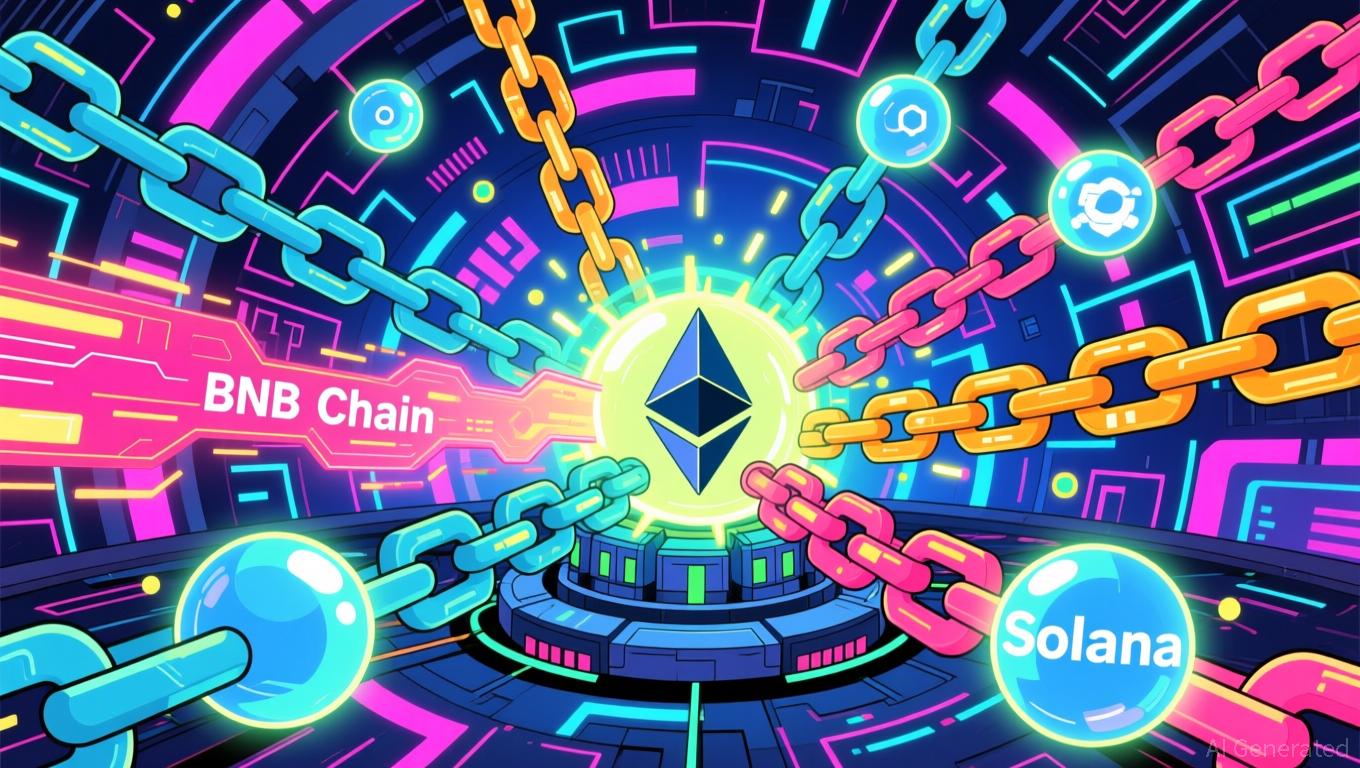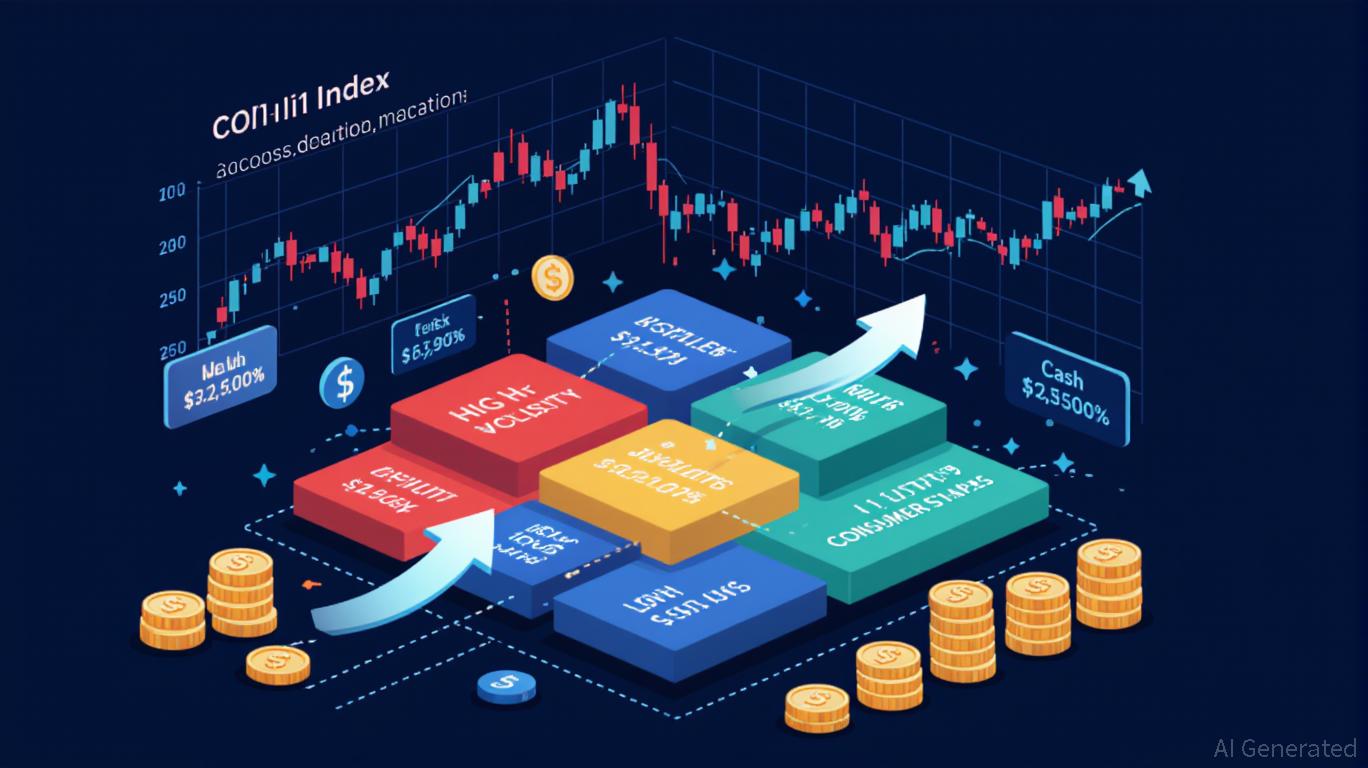Mono Protocol Sets Out to Transform Cross-Chain DeFi Infrastructure by 2025
- Mono Protocol's Stage 15 presale raised $2.8M of $3M target, offering 1011% profit potential at $0.500 launch price. - Project focuses on cross-chain interoperability, developer-first design, and Omnichain Paymaster for gas-free transactions. - Strategic partnerships with LI.F.I, Celestia, and Chainlink enhance scalability and data security in DeFi infrastructure. - Community incentives and October 30 audit highlight commitment to transparency, positioning Mono as a 2025 DeFi innovation leader.
Mono Protocol's development has drawn notable interest from investors, establishing itself as a key player in the evolution of cross-chain DeFi infrastructure. This strong momentum highlights increasing trust in Mono's focus on practical solutions for blockchain issues, rather than speculative trends, as mentioned in
Mono stands out for its developer-centric approach and commitment to cross-chain compatibility. By simplifying complex infrastructure, the protocol allows developers to build applications across various blockchains more efficiently and at lower costs, as previously reported by crypto.news. Its Omnichain Paymaster also improves user experience by enabling gas fee payments across different networks without the need for native tokens, as detailed in

Mono's upcoming milestones will be crucial for its development. A Smart Contract Audit scheduled for October 30 is intended to strengthen security and transparency—key factors for DeFi projects, as noted in
Active community involvement is central to Mono's approach. The Reward Hub encourages engagement through social, referral tasks, offering bonus tokens and promotional codes, as described in
Mono's technical partnerships with LI.F.I,
Disclaimer: The content of this article solely reflects the author's opinion and does not represent the platform in any capacity. This article is not intended to serve as a reference for making investment decisions.
You may also like
Ethereum News Update: Avail’s Nexus Bridges Liquidity Across 12 Blockchains, Tackling Fragmentation
- Avail's Nexus Mainnet launches as a cross-chain execution layer unifying liquidity across 12 blockchains including Ethereum and BNB Chain. - The intent-solver architecture automates optimal routing while aggregating liquidity from multiple chains through Avail's data availability layer. - Developers gain simplified cross-chain integration via SDKs and APIs, enabling real-time collateral pools and intent-based trading without managing bridges. - With Solana integration planned and Infinity Blocks roadmap

Ethereum News Update: Ethereum Drives Institutional Transformation with Amundi Tokenizing Major Fund
- Amundi tokenizes a money market fund on Ethereum , signaling institutional adoption of blockchain-based asset management. - Ethereum's upgrades like PeerDAS and Bhutan's $970k ETH staking highlight growing institutional trust in its infrastructure. - CoinShares' $250M Bitcoin Miners ETF and global digital ID initiatives underscore tokenization's role in modernizing finance. - Ethereum's $3,100 price resistance and technical indicators suggest potential for long-term resilience amid scaling improvements.

Hyperliquid News Today: Hyperliquid Adopts Tidewater’s Strategy to Streamline Crypto Risk Management
- Hyperliquid introduces automated downsizing to stabilize HYPE, which dropped 52% from its peak. - Strategy mirrors Tidewater Renewables' capacity management, balancing short-term volatility with long-term stability. - Hyperliquid Strategies DAT plans $300M HYPE buybacks to inject liquidity and institutional-grade risk frameworks. - Market faces $1.89B+ liquidation risks if Bitcoin/Ethereum surge, prompting automated buffers to prevent cascading sell-offs. - Approach reflects growing DeFi adoption of algo
The Unexpected COAI Price Decline: Key Lessons for Investors from the November 2025 Market Turbulence
- COAI Index's 88% November 2025 collapse stemmed from C3.ai governance failures, regulatory ambiguity, and panic-driven herd behavior. - Market psychology amplified losses as investors overreacted to AI sector risks, ignoring fundamentals and triggering liquidity crises. - Diversification, cash reserves, and AI-driven tools helped mitigate risks, emphasizing long-term strategies over speculative hype. - The crisis exposed dangers of overreliance on AI/DeFi narratives, urging disciplined, diversified portf
